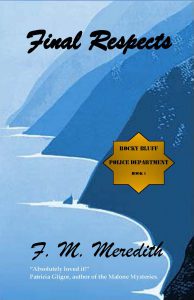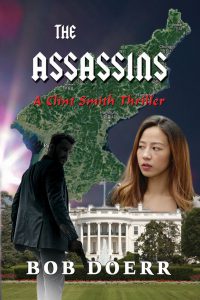PSWA Newsletter
June 2018
PRESIDENT’S MESSAGE

As some of you know, I’m getting married. In 86 days, I am re-marrying a man I’ve loved for decades. Guess that makes him currently my future ex-ex-husband. Ironically, I heard this amazing phrase while watching the movie What Happens in Vegas. Here at PSWA, we’re talking a lot about Vegas this time of year. Remarrying actually puts me in good company—RIP Ms. Taylor/Mrs. Burton. My hope, of course, is that my marriage keeps all the fireworks that theirs did but without the second split up in the end. And that he doesn’t die soon after. Regardless, rekindled romance makes a great story which is actually what I’m supposed to be talking about right now—writing. What I’ve found planning my wedding is that getting married is actually a lot like writing.
All the Planning—When you write, are you a seat of your pantser or an outliner? The same question can be asked of those planning a wedding. Some brides (I find it’s usually the brides) want to figure things out to the minutest detail and others would be perfectly happy grabbing something from their closet, spending 15 minutes in front of the Clerk of the Court and getting back to their day. I’m definitely the latter. All the details and planning that go into figuring things out is exhausting, but at the same time, I remind myself it’s about the experience and not just mine. It’s about friends, family, and also the groom. I find writing about the same. I grudgingly outline a bit so I know what I’m supposed to be doing and then fly by the seat of my pants with the rest of the writing. After all, who knows where the characters will take me?
Friends and Family Are Involved but Not Really—There are an unbelievable amount of wedding ideas out there. I’ve been getting bridal magazines lately, but I’ve found they give me more comic relief than actual ideas. On the other hand, my friends and family continue to support me in my planning. My best friend and Maid of Honor, in particular, continues to remind me why all this planning is important and directs me to get back to it. Similar to how things are when I write. They can all be there to support me, but I have to put my butt in the chair and get the work done.
The Pretty Touches—Flowers. Cake. Table Decorations. Chairs. You know all those essential things that make a wedding special. When you attend a ceremony, it all just seems so seamless, all the details put in place perfectly. Well, the planning for that is huge. I’ve been told my guests actually would like to a place to sit. You have to start with an idea and begin putting the pieces together. Then, you smooth it out to present the delightful, seamless thing. This is much like staring at a blank computer screen and just putting the word down. You have to write the crappy first draft. Then you can polish it to a shining, successful finish.
Showing Up—Not being a run-a-way bride is super important. Especially with all the tediousness of planning the details, it’s easy to think about not showing up for the party. After all, it would be less exhausting to just hide under a blanket on the couch. But, planning a wedding and the years that follow require determination and persistence. The same traits as being a successful writer. You have to suit up and show up.
It’s All About the Reception—The ceremony with its beautiful affirmations and promises is all fine and dandy. But in the end, it’s about celebrating that successful union with friends and family. It’s particularly special when you look around and see all the long-term marriages in the crowd. This is similar to my attending events with other writers and the fun of finding out how everyone else’s process is going. If you have the added benefit of attending the same event year after year, it’s even better. This is how I feel about the upcoming PSWA Writer’s Conference in Vegas. Sure, you’ll get lots of good information about public safety and the craft of writing, but you’ll also get to hang out with some amazing people in all the different stages of their writing. You’ll gain useful knowledge from the attendees’ range of experience, from police, fire, and EMS and a wide range of genres, including fiction, non-fiction, books, magazines and online. Like a wedding, mingling with this crew will leave you feeling refreshed and ready to face all the fun after the cake is eaten and you’re sitting there wondering, “Now what?”
I hope to see each and every one of you at the conference. If you haven’t RSVP’d (aka registered), do it now. Don’t delay and don’t worry. If you come, you won’t leave with a lifetime, legal commitment. I promise. See you in July.
—Michelle J.G. Perin, MS, EMT
PSWA President and Bride to Be
If You Haven’t Already…Register for the Conference

Summer is upon us, and the thirteenth annual PSWA Conference is right around the corner. Our thirteenth annual conference is scheduled for July 12th-15th at the fabulous Orleans Casino. Your board has been working hard to make sure this one, which we’ve titled our “Baker’s Dozen,” is chocked full of fun, surprises, and useful information. We’ve got some dynamite speakers scheduled and our writing contest has received some outstanding submissions. And don’t forget our pre-conference writer’s workshop. It’s a great opportunity to refine your writing process with tips from three professionally published writers who will critique your work.
Remember, the PSWA Conference is the friendliest, most fun, and most affordable conference of them all.
Let me once again mention the Pre-conference Workshop. Sure it does cost an extra $35, but it begins at 9:00 AM on Thursday morning. During this six-hour, intensive workshop, you’ll get the lowdown on writing techniques such as plotting, pacing, point of view, building and maintaining suspense, scene settings, and a personalized critique of your submitted manuscript that offers professional feedback on your writing. If you want to take your writing to the next level, this one’s for you. The three instructors have enough published works to fill a bookstore and each knows the ins and outs of the sometimes brutal publishing world.
The conference itself gets rolling on Thursday afternoon as the check-in procedure begins at 3:00 PM. You can pick up your name badge and bag of conference goodies, and pick out a special gag ribbon that will clue other people in on your personality. And it’s okay to stretch things when you’re selecting your gag ribbon. Last year mine said, Tall, Dark and Handsome.
And let me say a bit about the fabulous speakers we’ve got lined up. Retired LAPD Detective and prolific writer, Mike Brandt will tell you “100 Things You Should Know About Your Character.” Mike’s given this presentation all over the place to groups of mystery writers. Award-winning writer and professional editor, Susan Tuttle, will talk about “The Art of Self-Editing,” which as any writer knows, is a crucial part of turning out publishable work.
And we’ve got publishers as well. Austin Camacho (Intrigue Press) will join our old friend, Mike Orenduff (Aakenbaaken & Kent), on a publishers’ panel that will not only give you the lowdown on what the industry is looking for today. They will also be available to hear your pitches for new projects. So have those elevator pitches ready.
Anthony Robone, a young firefighter in Las Vegas who was attending the Route 91 concert with his brother and friends when the terror suddenly began. His brother was wounded and Anthony immediately sprang into action using his paramedic training to save lives. He’ll be able to tell you what it was really like on the ground during that terrifying incident. Our own Keith Bettinger, who subsequently provided crucial support services to first responders during the aftermath of the shooting last fall, will also talk about the experience along with another individual who was also involved.
And have you ever thought about serving up a nice cup of poisoned tea? Well, Gloria Casale and J.L. Greger will tell you how to get away with murder with their dual presentation of “A Little Knowledge Can Be Poisonous.” Don’t worry, we’ll provide “tasters” for anyone who’s nervous at their lunch table.
I’ve got some neat panels planned that will give you the information on various aspects of public safety and writing, including our long-awaited panel on firefighters, “Battling the Indomitable Foe.”
Plus, we’re in the process of assembling our annual mystery radio play with Steve Scarbourgh reprising his now-famous role as everybody’s favorite detective. Steve was a real-life Ellery Queen in that he worked in the Las Vegas Metro Crime Lab and is frequently sought to testify as an expert witness.
And lastly, we have our annual Writing Contest Awards where several people will leave the ceremony as “award-winning authors.”
So, if you haven’t already, register today. The PSWA conference has it all. The hotel is first rate, the rooms are very affordable, the meals are fabulous, and you’ll have an opportunity to rub elbows with other writers and those who’ve walked the walk in various fields of public safety. You won’t want to miss it.
—Michael A. Black
PSWA Conference Chair
How Are Cops Dying?
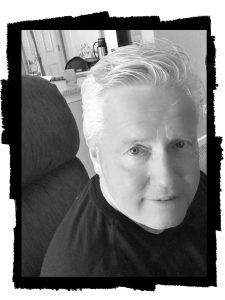
The 2018 headlines scream it almost daily—cops ambushed and killed; cop shot serving warrant, and on and on. As we celebrated National Police Week beginning on May 13th, a total of 45 police officers had died on duty, and 25 of the deaths had been the result of gunfire. On the same date last year there were 44 total fatalities. Last year, 2017, there were a total of 129 cops killed, 46 of those deaths were caused by firearms. The previous year, 2016, was even worse—135 police officers died in the line of duty. That number is the worst tally in the past five years. And a recent ABC News report said that if this year’s pattern continues at its current rate, 2018 could see 80 on-duty police deaths from gun violence.
Despite the carnage, the media seems almost silent for the most part. Sure every so often there is coverage of an officer’s murder or subsequent funeral. But generally the reportage is skimpy at best. Contrast that with the coverage offered when a criminal is killed by law enforcement and you will find a huge disparity in reporting. Days and weeks of coverage ensue, many times making the cops out to be assassins. Even though video and eyewitness evidence indicates the contrary, the media runs the fake news ad infinitum.
So what’s the real story? A recent study on police use of force “… found that in over 1 million police calls, use of force occurred in just 1 of 1,167 cases.” Cops are neither rogue killers nor assassins. According to the March issue of the Journal of Trauma and Acute Care Surgery, “The use of force by police can result in serious injuries and fatalities, but the risk of significant injuries associated with different types of force is poorly defined.” Dr. William Bozeman, a professor of emergency medicine at Wake Forest Baptist Medical Center and lead author of the study said, “We sought to determine the incidence of use of force by police and compare the rates of significant injury among the different methods that police officers employ.”
Among the suspects affected by the use of force incidents, 355 suffered mild injuries such as abrasions and contusions, but only 16 suffered moderate or severe physical injuries. One of the 16 cases was a fatal gunshot wound. Bozeman was surprised at the study’s findings and said, “A remarkable finding in the study is how infrequently police use force at all – less than 1 in 1100 calls for service and less than 1 in 120 criminal arrests is surprisingly low, and contrary to many perceptions that police commonly use violence in their interactions with the public.” The study concluded that when force is used by officers, most cops commonly rely on unarmed physical force and CEWs. Significant injuries are rare.
Needless to say, the popular narrative leads the public to believe cops are out to kill and maim people. However, nothing could be further from the truth. In fact, when a cop is involved in a shooting, fatal or not, it often affects him or her deeply. PTSD is one of the common after affects suffered by involved participants. And while in 2017 the number of cops killed amounted to 129, officers that committed suicide amounted to 140, that according to The Badge of Life (BOL) non-profit organization.
So how are we dying? Are thugs on the street a big danger to us, or are we more at risk of dying at our own hands? According to BOL, twelve officers died of suicide each month in 2017. The rate of police suicides in that year was 16 per 100,000, compared to the public rate of 13.5 per 100,000. And mind you, these numbers may not be all that accurate since some agencies don’t report suicides for various reasons. Typically, the average age for a police suicide was 42, time on the job was 16 years, and almost all were males (96%).
While we know how to train our officers to fight criminals on the street, we’re not that well equipped to train them on how to handle their own demons. More needs to be done to focus on officer well-being. Today’s cop is under tremendous stress from countless sources: the media, emboldened criminals, a weak criminal justice system, long shifts, fewer days off, home life, etc. Many agencies are shorthanded. Jonathan Thompson, executive director of the National Sheriffs’ Association (NSA), said that five years ago there were 100 applicants for every vacancy. Today, that number is down to the low 60s. Translation: fewer cops to fill the needed shifts.
Departments must employ mental health professionals who integrate well with officers, and whose sessions with those seeking help don’t amount to stigmatizing the individual. If an officer knows where to go when they’re no longer able to cope, a life may be saved. At the very least, negative behaviors such as alcohol and drugs can be avoided. In addition, officers need to be taught to recognize the signs of PTSD not only in themselves, but in their fellow officers as well.
Today’s battles are being fought on two fronts—on the streets and in our heads. Enough of us die at the hands of thugs and knuckle draggers. Let’s protect ourselves mentally; let’s get the mental toughness we need to fight through the demons trying to take us down.
—John M. Wills
Award-winning Author/Freelance Writer
Website: http://jwillsbooks.com/
Facebook: https://www.facebook.com/johnmwills
Twitter: https://twitter.com/johnmwills
What I Learned from Judging Contests

Over the last few years, I’ve been a first-round judge in a number of contests for a variety of genres, from romance to crime. These contests all involved reading either short stories or a small set of pages, like the “first meeting” scene for romance. I noticed two patterns in the stories that didn’t make it to the second round.
Thinking about these patterns before you revise your first draft might help you bring out the best in your story.
Following All the Rules But One
Some entries are letter-perfect: perfect grammar, a conflict that will be difficult for the protagonist to resolve, a worthy opponent. And yet, the story is just not…interesting. The special and unique voice of the author was scrubbed right out of the story, leaving a school exercise instead of a riveting tale. One of the most important elements of a story is your voice: what you are saying is true about the world as proved by the outcome of your story. What you decide is at stake for your main character—the emotional or spiritual cost if they lose the main conflict, is the skeleton that supports your voice.
For example, in the movie Casablanca, we know that Rick risks becoming the bitter, remote rock he’s been pretending to be if he doesn’t act to save Ilsa. In Die Hard, John McClane reveals that he is vulnerable. We see his fears (fear of flying, fear of losing his wife), and then the movie goes about throwing the most extreme version of his fear in his face. We know this guy is going to die, literally and figuratively, if he can’t save his wife. As you read novels, look for what the author is saying is true about the world–whether you personally agree or not, a good author convinces you within the context of the book that “war is hell” or “no man is an island” or whatever particular point of view makes the author’s voice unique. And then take care that while you edit that you don’t scrub out your voice!
My work-in-progress (WIP) isn’t grabbing people the way I expected. The main character is a tough-as-nails woman who is good with numbers but bad with men. Well, it turns out I never put her vulnerability, what it will cost her if she fails to prove that she and her friend didn’t kill someone. In a generic sense we can understand that nobody wants to go to jail for a crime they didn’t commit, but what, specific to this character, is at stake emotionally or spiritually? I know what it is, but I never got it on the page in scenes of conflict. Easy enough to fix, but it took me forever (and a Jeffrey Deaver seminar) to figure it out.
It’s tempting to put all this in the dialog. But having a character explain things to the reader won’t carry any power. These things must be acted out in the main conflict of the story. Remember, Sam Spade didn’t tell us that he feared he was little better than the criminals he encountered. We watched him wrestle with this in every major scene in the book (and the movie).
If a writer nails this—makes the reader feel the main character’s fears, desires, and vulnerabilities from the action of the story—a contest judge, agent, or publisher is far more likely to overlook a few small grammar or polish issues. But if the writer doesn’t get this aspect of the story on the page, no amount of editing is going to move it to the next round.
Many writers don’t know what the premise of their book is until after they’ve written it. So don’t worry if your first draft doesn’t have a clear, strong voice. As you revise you can layer in the meaning as you refine the choices your protagonist makes about the conflicts she or he encounters. For example, think about the difference between Joseph Wambaugh’s early novels compared to Tony Hillerman’s novels. You’d never confuse one of those author’s books for the other not just because of setting and character, but because each man has something different to say about the world.
Clichés R Us
A friend of mine, a well-published author, once said about a contest she judged: “I hoped at the beginning of every story that there wouldn’t be a middle-aged, womanizing man with a drinking problem who wore a raincoat. There were so many of them!” She was judging for the Private Investigator (PI) sub-genre. You likely have your own love-to-hate-it cliché, like the unarmed person wandering into a dark empty building alone to catch the killer, or the kindly grandmother who has solved more crimes in her hometown than NYPD does in a year.
The thing is, we all write clichés in our first drafts. We’re steaming along, and sometimes we grab the first idea that comes along so we can keep in the flow, keep getting the story down. There’s no shame in a first draft with clichés. (How many cliches do you see in the second sentence of this paragraph? They are honestly what I wrote in my first draft of this article.) so if we’re doomed to write them, how do you notice the clichés, and how do you fix them?
Noticing the cliché is the easy part. Put your work down for a day or three, then read it and circle anything that seems familiar-to-overdone. Of course, you need to read a fair number of books in the sub-genre you are writing in order to do this. Here’s a starting list of sub-genres and clichés:
- Private Investigator: has a drinking or drug problem, a broken marriage, or money problems; wears a raincoat, beautiful women throw themselves at him.
- Police procedural: The veteran cop and his or her new partner, the cranky-with-a-heart-of-gold Lieutenant, good cop / bad cop.
- Thrillers: Preface/first chapter where the beautiful young victim is killed as seen through the eyes of the killer, a literal countdown clock, knocking a character unconscious to move to another location.
What can you do when you spot a cliché in your story? You have two choices: replace the cliché with something less familiar, or reinvent the cliché. For example, when I read Sara Paretsky’s, VI Warshawski stories, just having that character be a woman instead of a man meant that many clichés seemed new again: tough PI from Chicago’s rough neighborhood, broken marriage. Familiar elements in a new context kept it fresh.
Another example: if you have a veteran cop/new partner scenario, you could make the new partner more senior than the veteran, or make the veteran wacky and irresponsible and the new guy a world-weary rule-follower. Change up genders or ethnicity—then follow through on how those changes would affect the story.
To completely replace a cliché with something different, you can use a brainstorming technique: think of at least 10 different things you could do instead of the cliché. Often the first two or three are also clichés, but after that, you might get some truly original ideas. For me, the last two ideas are always silly—that just means I’ve plumbed the depths of my imagination for the moment.
—Mysti Berry
PSWA Website Wrangler
Researching Your Work: A Labor of Love

I have to admit one of the most enjoyable aspects of writing, for me, is researching my work, whether it is weapons, locations, wounds, ballistics, roads or whatever.
I like to incorporate reality into my books, even though they are works of fiction. I have always enjoyed reading a book that mentions real places I can relate to. It makes the story so much better and causes me, the reader, to really buy into what is happening when I have a visual response to the event.
In my first book, M.P., a fictional account of a young Military Policeman in Vietnam, I sent for military maps of the area where the story took place, and maps showing which military units operated in that area so that all the towns, hamlets, villages, rivers, waterways, roads and highways, and military units of both sides mentioned in the book existed at the time setting for the story. I felt it was important as M.P. has a narrow audience, mostly former or active military, many of whom actually were M.P.’s who served in that area of Vietnam. It made the story better, too, as seeing the maps made me remember things I had forgotten, some intentionally, that I was able to incorporate into the book. In some of the reviews of the book, the readers mentioned they were M.P.s who served in Vietnam or even served in the area at that time. It made it personal for them.
In my next two books, Retribution and Diplomatic Immunity, I actually spent a day or two in San Francisco, the setting for the books, and drove around mapping routes my protagonist and suspects took, describing the areas vividly. A reader could follow the routes and see the buildings and other sites where the action takes place. In Diplomatic Immunity, I researched the sniper weapon used, spending a few hours going over dozens of weapons until I found the one that fit the story. I also spent an afternoon riding our public transit, Bay Area Rapid Transit, stopping at all the stations in San Francisco and across the Bay, mapping them and learning what they looked like, seeing the roads that were close by and possible escape routes, as there is an important scene that takes place at a BART station. I researched the Consulates and Foreign Embassies in S.F. and, enlisting the aid of my daughter, drove to each one mentioned in the book, photographing the buildings and learning the routes to and from them, and vantage points from which a sniper may set up.
A side note here—the Russian Embassy in San Francisco is on Green Street, on a corner, and all sides are covered by CCTV cameras. As I walked around the Embassy photographing it, I noticed that the cameras were following me, so, maybe rightfully concerned, I chose caution over valor and left the area rather quickly! I wonder to this day if somewhere in the KGB files in Moscow there is a dossier on me!
In closing, as I said before, doing research is one of the most fun things for me in my writing. I like when a reader emails me or mentions in a review that they loved a particular scene or the climax of the book taking place at a location they are familiar with. It just seems to validate the value of proper research. Even if I don’t use a real location, the research gives me a good perspective of the fictional area that I can use to build a convincing setting. Don’t forget to research weapons you have your characters use and the ballistics for each, pIus the severity of any wounds the weapons cause, minor or major, and the effect on the wounded person, including recovery time.
Thoroughly researching my books has, I believe, has made me a better writer and made writing a very enjoyable experience. Happy writing to you all!
—John Schembra
PSWA Vice President
Check Engine Light

I was almost at my destination when I looked down at the dashboard and saw that the dreaded “Check Engine” light had come on. I thought, Now what? But a few moments later the light went off. I breathed a sigh of relief, but deep down I knew something was wrong with my engine. The past couple of weeks the car had been feeling sluggish, and there was a slight hesitation whenever I stepped on the gas. I did my best to ignore the warning, but I realized it was only a matter of time before I’d find myself stalled on the side of the road somewhere. Better take care of it now while the car is still running.
How about you? Have you ever had your “Check Engine” light come on, and if so, have you ignored it? I’m not actually referring to your vehicle—I’m talking about your body. There are times when our bodies send us signals that something’s wrong with our engine. However, many of us have a tendency to ignore warning signs from our bodies, just like those from our vehicles. Have you ever felt weak or run down, or described yourself as fatigued? In police work, given that we often work crazy shifts, overtime, long hours in court or on details, it’s easy to feel weak. But you should know the difference between feeling weak and feeling fatigued. The two seem interchangeable, but they’re very different.
Weakness
Weakness is characterized by a lack of physical or muscle strength. You feel as if you need extra effort to move your arms, legs, or other muscles. If the weakness stems from pain, making your muscles work will definitely hurt. Weakness is a symptom of a health problem that needs to be evaluated by a physician. Sometimes weakness can be the result of an unusually tough workout, such as running a long race or playing a hard football or basketball game. Perhaps you may have pushed yourself too hard in the gym. General weakness due to those activities is normal and should go away within days.
However, sometimes muscle weakness may be the result of a health problem. If your body is low in electrolytes, such as potassium or sodium, or if you have an infection such as urinary or respiratory, you may experience weakness. Did you know that a thyroid imbalance can cause many problems such as weight gain, depression, memory problems, dry skin, or thinning hair? And problems such as weight loss, increased heart rate, sweating, and anxiety, can all cause muscle weakness and should be addressed with a doctor visit. Much more serious is sudden muscle weakness, which may be the result of a stroke or a TIA (transient ischemic attack), also known as a mini-stroke. A TIA occurs when blood flow to part of the brain is stopped for a short time. It’s the same as a stroke, but it doesn’t last long or cause permanent damage. (See a doctor ASAP as a TIA means you may have a stroke in the future).
Fatigue
Fatigue is described as a feeling of tiredness, exhaustion, or lack of energy. Many of us will feel fatigued when we’re overworked—too many hours, such as pulling a double shift. Fatigue may also result from stress, poor sleeping habits, worry, lack of exercise, or a bout with a cold or the flu. In most cases, fatigue associated with a health problem will disappear once you become well. Some medications, whether prescribed or over the counter, can cause weakness or fatigue. Also, overuse of caffeine or alcohol, as well as illegal drugs, can leave one feeling tired and/or exhausted.
When you feel fatigued, but also have an accompanying medical problem such as shortness of breath, bleeding, or unexplained weight gain or loss, a doctor visit is in order. Be aware that fatigue lasting more than two weeks can be the result of a serious health problem such as anemia, coronary heart disease or failure, metabolic disorders (diabetes), thyroid disorder, or kidney disease. Persistent fatigue may signal that you suffer from chronic fatigue syndrome or CFS, which causes exhaustion, sleep problems, thinking problems, and pain throughout the body. CFS has no cure, but treating the disease can improve your quality of life.
Just as ignoring the Check Engine light in your car is a bad idea that will likely result in serious problems down the road, ignoring that same warning in your body can be catastrophic. Men, in particular, are wont to ignore many health problems thinking they’ll disappear on their own. Don’t be foolish—if you are feeling weak or fatigued find the reason and fix it. Don’t wait until you find yourself broken down on the side of the road. Get a doctor to check your engine and save yourself some aggravation, or perhaps, your life!
—John M. Wills
Website: http://jwillsbooks.com/
Facebook: https://www.facebook.com/johnmwills
Twitter: https://twitter.com/johnmwills
Member: National Book Critics Circle
Latest novel: THE STORM
Read my articles on Officer.com and Law Enforcement Technology
Safety in Traveling Abroad
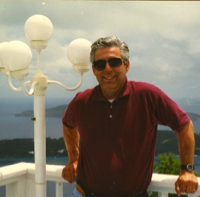
I just returned from a 14-night Baltic cruise out of Amsterdam, including port stops in Estonia, Denmark, Finland, Sweden, Germany, & Russia. In light of today’s security concerns, especially in European countries, I considered a lot of “What-If’s” in preparation for this travel. You can call me as being overly concerned, even to the brink of paranoia, but as a former Boy Scout… ”Be Prepared” still sticks with me. So, whether or not you are a World traveler, I’d like to share with you some of the precautions that I took.
Documentation: Before leaving home, make photocopies of your passport, credit cards, and other documents. Leave one copy at home with friends or relatives, and take one copy with you that can be left in your ship cabin or hotel room safe.
Notify your credit card company of the general dates and location of your travel, so they will not think it has been stolen and put a “stop” on its use when they see activity abroad (This happened to us once before). Ask if the credit card can be used in your area of travel without any additional international fees. Same with your cell phone company, and if there’s anything special you need to do to make international calls.
Separate credit cards with a spouse or traveling companion. I have my wife carry our MasterCard, and I carry the VISA. That way, if one is lost or stolen, we can cancel and still have another account for financial means.
Most overseas tourists’ destinations take major credit cards. Never carry a lot of cash. Use traveler’s checks and photocopy their serial numbers. Take your medical health insurance card and a list of your medical prescriptions.
Translation Cards: My first adventure overseas happened when I was 20-years-old, and at the courtesy of Uncle Sam to Southeast Asia. Upon arrival in-country, the “locals” spoke no English and I spoke no Vietnamese. Therefore, I guess that I was kind of expecting the same in these countries of my vacation this time.
However, being the “Country Bumpkin” from Kansas that I am, I was impressively surprised to find so many in each country who spoke English. Yet, before leaving home, I had prepared a 3×5 index card for each port stop with a few basic phrases in the native language (i.e., German, Russian, etc.). Such things as:
- Do you speak English?
- Ship Port
- Restaurant
- Taxi
- Police
- Toilet (probably the most essential for a man of my age)
On these cards, I also included a current money conversion rate in Euro, Rubles, Krones, or the standard monetary system of the country. That way, I could basically convert in my mind how much money my wife was spending on souvenirs for the kids and grandkids (It was a lot).
I know all of this could be done on a cell phone app, however, I didn’t want to take my cell phone off the ship, as it could potentially be a target for theft. Speaking of target items, don’t allow an unsolicited offer from a “local” to take your picture with your camera. That is, unless you can run as fast as they can when they take off with your camera.
Clothing: As proud of my military and American background as I am, I was cautious to eliminate bringing anything that might overtly give away my patriotism to the USA. I mean, I’m sure that just the camera hanging from my neck, Bermuda shorts, and Hawaiian shirt was indicative enough to confuse me with Chevy Chase as Clark Griswold.
Seriously though, I took none of my backpacks indicating my Special Ops Association or military camouflaging patterns, no ball caps or T-shirts with logos identifying me with LAPD or Army. I even removed my retired police ID from my wallet, in case that was stolen or pick-pocketed.
Pick-pocket crimes are especially rampant in tourist destinations. I have a police friend and a Special Forces buddy who have both been victimized this way, so no matter how good you are, it happens. I prefer wearing those cargo type pants, where my cash, credit cards, or small valuables can be placed in a zippered or Velcro pocket. Pick-pocket thieves don’t like zippers or Velcro.
I do have a few small money bills separate and placed in a side pocket that can be used as throw-away money, just in case I am robbed or forcibly demanded. One note, don’t resist giving up anything that is demanded by threat; valuables such as cameras, cell phones, cash, watches, and jewelry can be replaced.
Ladies, when off-ship and on excursions, don’t wear flashy or expensive jewelry. Leave your purse onboard in the cabin’s safe, and only carry a ship “Sail & Sign” card, a photo ID (or passport, if required by authorities). There are specially designed document holders that can be hung from your neck by a lanyard for these documents. Some even have secret compartments for carrying a credit card or a small amount of money.
Wear comfortable shoes that you can run in easily. Ladies, take note…flip flops or sandals are not in this category.
Take Care of Yourself: Ask directions at a motel/hotel, not from people on the street. Ask if there are any areas of the city you should avoid. It’s best to stay in the areas that are recommended by the cruise ship lines, and where you see other passengers from your ship or others that are in port. Cruise ship guides and tour groups have been carefully vetted by the travel organization of your trip. But nothing is 100% foolproof. Remember, my claim as a security professional…“There is no such thing as Crime Prevention, only Crime Reduction.”
Bottom Line: These tips may seem to be simple suggestions. Yet, going on vacation makes us especially vulnerable because we’re relaxed and thinking of fun rather than danger. These three things are most important: Use common sense. Be aware of your surroundings at all times. Have a survival mindset.
Stay Safe!
—Ron Corbin
Author of PSWA Award Winning book, “Beyond Recognition”
A Primer on 911 Emergencies
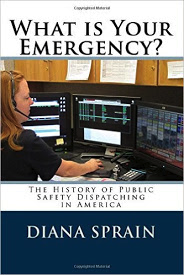
Today we all take the 911 emergency systems for granted when we need help but it wasn’t always in existence. What did folks use before 911? When did the number pop into place? How was it chosen?
In 1967, President Lyndon Johnson appointed a task force to investigate the problems of law enforcement in America. “The Challenge of Crime in a Free Society” was released in 1967. One of the issues noted was the increasing amount of traffic on the radio, which, according to the Task Force, overtaxed Dispatchers during peak times. A need for a single contact number was pointed out. The infamous White Paper on trauma response had brought up the same conclusion. Remember, England had its 999 service since 1937 and Canada added the number in 1959. The USA was behind the times.
The Federal Communications Commission (FCC) and American Telegraph & Telephone (AT & T) had discussed the possibility of a universal number but nothing had come of it until the Associated Public Safety Communications Officers (later changed to Officials), or APCO, became involved. APCO pushed for the number.
Meetings were held and heads scratched. The hurdles were massive. First, if, and this was a big if, what series of number would be used? Next, how could the various phone companies be convinced to become part of the system? Where would the funding come from for public safety agencies? Who would be responsible for answering the calls? Finally, would the public trust the service?
The number had to follow AT&T rules. The second number couldn’t be a zero as this was part of the long-distance coding or one marked for use. 911 was selected as it was easy to remember. Why the officials didn’t go with 999 to stay with Canada and Europe is a mystery. AT&T didn’t consult any of the other companies (remember, Ma Bell had been broken up as a result of the monopoly lawsuit). This caused problems once the system went live.
Indiana Representative J Edward Roush (D) jumped on board and helped push the legislation through Congress. On November 8, 1967, House Resolution 361 passed establishing 911 as the official emergency number. It was agreed the service would be paid via terrified rates on phone lines and numbers. After AT&T technicians completed the logistics of call distribution and routing, the next step was a test call on the system.
Haleyville, Indiana was chosen to receive the first 911 call. It was made on February 16, 1968. The initial 911 calls were Basic 911 with ANI, or automatic number identification. Enhanced 911 was developed in the late 1970’s and consisted of ALI, or automatic location identification. One problem with traditional ANI and ALI is with PBX lines (large companies, hospitals, etc.) – the 911 information only displays the primary address. ANI and ALI were designed to be used with hard-lined phones which were fine until mobile phones came along.
October 2, 1996, started a new three-digit service: 311. It was meant to take the load off the heavily over-burdened 911 system. 311 is for non-emergency requests that do not involve suspects or follow-ups by law enforcement.
In 2000, the FCC developed Wireless Phase I and II to allow for mobile phones. Phase I required cell towers to hit on the nearest cell tower. Phase II required location within 300 meters of a cell tower via triangulation of towers or via GPS coordinates. Next Generation 911 (or NG911) came along. NG911 is touted as the latest and greatest, and includes the possibility of text-to-911, attaching audio and/or video files, and using the Cloud. Still, as many agencies and Dispatchers still lament, a pizza delivery service can pinpoint a caller’s location in an instant but 911 Public Safety Answering Points (PSAPs) are still relying on antiquated equipment (Phase I or II).
911 is not perfect. The USA is not 100% 911 compliant. There are areas where Basic or Enhanced 911 is the rule: after all, cell towers are not installed in rural areas, and for IP-based services you need internet. Many states don’t have misuse laws for those harassing PSAPs.
Many states don’t require any minimal training for their Public Safety Dispatchers yet firefighters and law enforcement have a list of mandatory, yearly courses. Or, as in Nevada’s case, there is a requirement but no funding to cover the expense. Finally, the 911 tax is gathered but diverted to other parts of a state budget.
For a more in-depth history, check out my book: “What is Your Emergency? The History of Public Safety Dispatching in America.”
—Diana Sprain
Author of the Greycliff Chronicles series: On the Trail of Yesterday’s Rose, In the King’s Shadow, and For Queen and Country.
Diana Sprain emigrated to the U.S. from England with her family. She has worked as an Emergency Medical Technician, Emergency Room Clerk, Certified Pharmacy Technician, and a Public Safety Dispatcher. Her law enforcement experience varies from working as a line Public Safety Dispatcher, a Civilian Training Officer, a Tactical Dispatcher, and a Supervising Public Safety Dispatcher. She currently works for the Nevada Department of Wildlife, law enforcement division as a Public Safety Dispatcher. She is the Terminal Agency Coordinator and a Civilian Training Officer.
She is a member of the Sierra Writer’s Group, the Public Safety Writer’s Association, the Associated Public Safety Communications Officials (APCO), and the National Emergency Number Association (NENA). Diana is a Public Safety Dispatcher with over 30 years of experience.
She shares her home with her husband, Sam, Coco their Chinese Shar-Pei, and their cat, Dexter. She enjoys writing, painting, gardening, and attending Renaissance Fairs in costume.
Interesting Links
- Book Design. Joel Friedlander is a great, inexpensive source for book design help: The Book Designer gives book design awards and has a lot of examples of good book design as well as instructions. You can subscribe to his newsletter.
- Print-on-Demand. The Sacramento Public Library obtained a grant to buy a POD machine. This YouTube video shows the machine in action: I Street Press: A Community Writing & Publishing Center. Costs and details are on the Library’s website.
I have a POD in the works now, building my file, and will probably test it at the Library before going to Create Space. I would get more hands-on help at the Library.
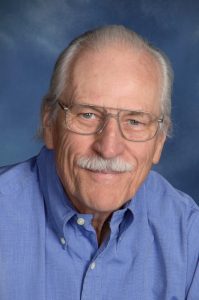
—Information provided by Jim Guilgi
The Importance of Editing
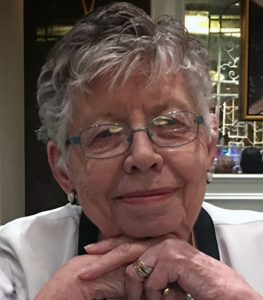
Recently I purchased a book from a friend intending to write a review on Amazon. I couldn’t do it because the book was so badly edited, I finally gave up about 1/3 of the way through. Another friend had the same reaction as I did. I feel sad for this new author because the basic premise of the story was good and the location one that hasn’t been used to death. I also know the author paid a lot for the cover.
With a good edit, this might have been a good read.
The part I read was riddled with typos. One sentence had the same passage at the beginning and the end. Point-of-view was a mess. There were missing quote marks and odd punctuation, and so many more problems..
No book is ever perfect. Typos do slip by, even with the major publishers who have editors and copy editors.
When submitting to a publisher, you want to make sure that you’ve done the best job possible self-editing, and then to make sure, you should have someone who is a professional editor check it over again.
This is even more important if you are self-publishing. Don’t rely on your best friend or a relative to do the final check of your book. Hire an editor who knows what to look for in the type of book you’ve written.
And in case you’re wondering, the book wasn’t by anyone in PSWA.
Lately, I’ve been re-editing several of my books, and found a lot to fix or rewrite, but partly because some so-called rules for writing have changed over the years.
—Marilyn Meredith
PSWA Newsletter Chairman
http://marilynmeredith.blogspot.com
Keeping Tension Snapping in Your Dialogue
This excerpt is taken from a new “How to” EBook called “Writing Suspense in Your Mystery Fiction,” finished, but as yet unpublished. Stay tuned.
- If you have trouble with dialogue, read your piece aloud. Then quiet yourself. Fall into a daze of non-thought, then listen within to your characters talking to each other. See if you can “hear” them. What kind of words do they use with each other? Are they slangy? Terse? Colloquial? Profane?
- You can learn about them by “listening” to them in quiet moments within yourself. After all, that’s where they live, isn’t it? They are you. They aren’t you. Imagine everyday conversation. How do they talk about needing new tires for the car? A kid’s bad spelling test?
- Charge right into a passage of dialogue. You don’t need greetings, chitchat, comment on the weather, or compliments.
- Supporting characters can show doubt or disbelief about your main character’s goals or plans in the curl of a lip, a snort. “Yeah, well …” has a wealth of meanings.
- Watch out for passages of retelling something that has already happened or commenting on events that are happening instead of showing them. Exchange exposition for confrontations between players, arguments, teasing, and misunderstandings.
- Give some of the lines to somebody with a different POV. Save up a witticism for here.
- Examine the visual impact of your dialogue sections. Tense dialogue contains lots of short sentences, fragments and white space. Watch out for dialogue that goes on for pages (unless you’re Robert B. Parker or Elmore Leonard, and none of us are).
- If you’re building to a toe-to-toe confrontation, don’t do it over a four-page argument scene. Break it up. Take a phone call. Interrupt the gathering storm with an announcement that dinner is ready. You’ve built an expectation that this isn’t over yet, and your readers will stick with you to see who prevails and what happens in this confrontation.
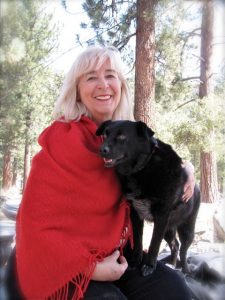
—Mar Preston is an award-winning Public Safety Writers Association author of six “How to” EBooks on “Writing Your First Mystery,” as well as seven police procedural novels.
Author News
Jackie Taylor Zortman: I Have a New Novel on the Market
It was exciting when UPS showed up late yesterday afternoon with that big box filled with my latest novel Snow Angel (Detective Max Richards Book 2). All of you know the excitement when we get to finally hold our book (or is it new baby?) in our own hands.
Detective Max Richards Book 1 is my PSWA first-place award-winning Footprints in the Frost. Although Snow Angel is a sequel, it can easily stand alone and be read with no confusion related to the first book. There are a lot of authors ahead of me in the pipeline at my new publisher Aakenbaaken & Kent, but Mike has offered to put the Kindle version of Footprints in the Frost up on Amazon.com temporarily for those who are curious about the first book. It’s already available as a Nook on www.BN.com.
In Snow Angel when Detective Max Richards and his sister suddenly inherit their mother’s estate, they find an old wooden box on a shelf in her bedroom closet. It reveals a secret she kept carefully hidden and connects them to a statuesque and abandoned Victorian house in Snowflake, Colorado. Ironically, Max and his wife, Sami, already own a remote cabin there.
During the Christmas holidays, they fly to Snowflake to investigate the empty and dusty old house. Following their tire tracks in the snow, the newly appointed city police chief is introduced into their lives and quickly becomes an important part of their tight-knit circle of friends.
Returning to the city, Max becomes emotionally restless. He retires from his thirty-year homicide job, pulls up roots and moves permanently to Snowflake where he quickly becomes part of the small police force. Unexpected twists and turns take control of their lives and change things in ways they never dreamed. Find out what was in that box that had such power and what paths it led Max, Sami and his sister, Willow, to follow.
You will find Snow Angel as a trade paperback and Kindle at http://amazon.com/dp/193843644x. It also won a PSWA writing award in 2017.
Blurb by John M. Wills, Award-winning Author/Freelance Writer
Max Richards is a tough homicide detective whose life is structured and orderly. However, when his mother dies and an old wooden box surfaces among her belongings, it changes everything. What secrets was Mom hiding from the family and why? When the truth is finally revealed, Max finds an uncertain future ahead of him and his family members.
About the Author
Jackie Taylor Zortman is an award-winning published writer/author. She has been writing for the last 26 years and has been a member of PSWA since it was the Police Writers Club back in 1994 when Roger Fulton first organized it. She is the author of a non-fiction book “We Are Different Now” and two award-winning fiction novels, “Footprints in the Frost” and “Snow Angel.”
She has had numerous articles and short stories published during that time, is a Charter Member of the Public Safety Writers Association and a member of Rocky Mountain Fiction Writers. She is a contributing author to the anthologies “Felons, Flames & Ambulance Rides”, “American Blue” (editor Ed Nowicki), “The Centennial Book of the National Society of Daughters of the Union” and “Recipes by the Book, Oak Tree Authors Cook.” She also writes poetry, genealogy, and history. She has won 10 writing awards in the last five years.
She lives in a bustling quaint tourist town high in the mountains of Colorado with her husband and Siamese cat. When the deep snows of winter blanket the terrain surrounding her home, it becomes the perfect spot in which to write.
Mysti Berry: Charity Anthology Launches in July, 2018
Mysti is publishing a charity anthology to help fight voter suppression on July 4, 2018.
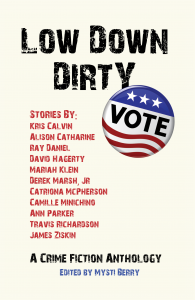 More details will be on the website in June: lowdowndirtyvote.com, or follow @LDDV_anthology on Twitter.
More details will be on the website in June: lowdowndirtyvote.com, or follow @LDDV_anthology on Twitter.
Marilyn Meredith: Resurrecting an Old Series
Thanks to Mike Orenduff and Aakenbaaken and Kent Publishing, Marilyn Meredith’s (who writes this series as F. M. Meredith) Rocky Bluff P.D. series is seeing a new life. Each book in the series is being re-edited and the whole series is getting new similar covers.
This particular series has been published by four publishers. A & K will be number five. It’s been a long and painful trip with an exciting final destination. The first book in the series is Final Respects.
Bob Doerr: New Book Release—The Assassins
I’m happy to announce the release of my new book, The Assassins, the third book in my Clint Smith series. Of all my books, I think this one is the most contemporary with world events. I have been fortunate to have always had several book plots floating around in my head, so in October 2016, a month before the national elections, and as I began my planning for a new Clint Smith book, I realized that I had never seen (or at least recognized) such a politically polarized election.
What if the side that lost the election had a few powerful people who reacted by plotting to have the new president assassinated? For the book to work, it didn’t matter who won the election. It seemed to me that more people disliked each candidate than liked them. In fact, for a good part of the book, I kept referring to the president as the president rather than he or she. Staying with the contemporary theme, I set my story in Korea.
I’d like to share a short summary of the book The Assassins:
A disputed election has divided the nation, and a handful of senior, government officials have conspired to have the North Koreans assassinate the President of the United States. Believing the assassination attempt to be only days away, Theresa Deer, Director of the Special Section, a small unit whose existence is known by only a few in the U.S. government, sets out to interdict the man intent on providing the North Koreans vital information about the president’s itinerary for his visit to South Korea. While Deer succeeds in her mission, she is severely injured and finds herself being hunted by the North Korean assassins who still intend to assassinate the president. Clint Smith is sent to Korea to help Deer get back to the U.S. and finds himself caught in a deadly game of cat and mouse with the North Koreans. With no one in the U.S. government to turn to for help, and the South Koreans now also hunting them, getting out of South Korea alive is looking unlikely.
I hope you get a chance to read and enjoy this book.
About the Author
Bob Doerr, an Air Force veteran, has thirteen published books. His past books have won a variety of awards, and Bob was selected as the Author of the Year by the Military Writers Society of America.

